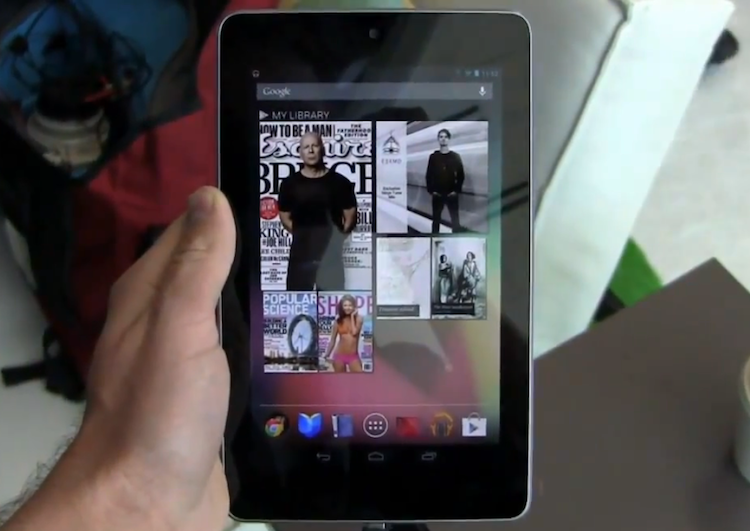
When it comes to Android, Nexus is a word that carries a bit of weight and significance. Not only is it branding for a line of devices, it was once a promise from Google to put control back in the hands of the consumer, to have the device they wanted on the carrier they wanted with little to no interference from manufacturers and carriers along the way.
Nexus devices were once pure – advertised as the purest Google experience. They came easy to unlock (which, for the record, hasn't changed), with no manufacturer or carrier bloatware, minimal branding, the promise of speedy software updates and a distinguished look and feel.
Until this past Winter, Nexus was always exactly as Google envisioned Android at the time of each release. The Nexus One was the purest Android experience one could have possibly tasted. But it launched unlocked and unsubsidized. And to a nation of wireless customers who have been misguided by deep subsidization, a $535 phone is a hard knot to swallow. Google partnered with AT&T, T-Mobile and Sprint for the (staggered) launch of the Nexus S. Although Google changed their game plan after the original Nexus launch all but crashed and burned, the Nexus S remained pure.
As I explained in November, however, Google sort of strayed from its original path with the Galaxy Nexus by Samsung and lost sight. In order to make a Nexus launch finally work, they allowed both Samsung and Verizon walk all over their branding and their core philosophy of what is Nexus. The Galaxy Nexus was named after Samsung's popular flagship smartphone line, Galaxy, and the Verizon version came loaded with carrier bloatware and updates that are not directly from Google.
What's worse is how existing Nexus owners were handled this past time around. One of the promises of owning a Nexus device is rapid updates directly from Google. A few weeks after the Ice Cream Sandwich announcement, many Nexus S owners received a buggy update that corrupted data and rendered some phones useless. The update was quickly pulled and it was several more months before any Nexus S owners received any more word on the progress of the update. And Android 2.3 was the end of the road (at least officially) for the few remaining Nexus One owners.
To most people, none of this really matters. Most of the people who purchased a Galaxy Nexus this year did so because they liked the device, not because they knew what Nexus meant or cared about owning a developer device that might get more software updates than its non-Nexus compatriots.
But to developers and Android purists, the Galaxy Nexus was a jab to the heart. It signified that Google either: a) didn't have the same pull its largest competitor, Apple, has had with wireless providers or b) it had caved under the pressure of two botched launches and was willing to do anything to get the Nexus line off the ground, even if it meant going against the entire Nexus ideology.
Last week, though, at the Google I/O 2012 developers conference, it felt as if Google is headed back to its roots … in more ways than one.
For starters, there was no garbled crap in the naming of the two new Nexus devices. The tablet, which is manufactured by ASUS, was not dubbed the Eee Pad Nexus, Trasnformer Pad Nexus or MeMO Nexus. It is simply called Nexus 7. And ASUS didn't slap unsightly branding all over the device. ASUS is given some recognition on the back plate, but the bigger label alludes that Nexus is priority. And the Nexus Q, which is made by Google itself (right here in the U.S. of A., no less), is a marvel of design and frictionless social streaming.
Both Nexi and the Galaxy Nexus (international) are available in the Play Store for very competitive prices. (Don't forget to consider the price of that "Made in the U.S.A." stamp on the Nexus Q.) They come unlocked (where applicable) and with a considerable amount of hackability.
Granted, there is no carrier intervention for these two new Nexus devices. But with the refocus on Nexus branding and ever-improving ecosystem (a la Play Store), I get the feeling Google is taking Nexus back to its origins, back to what Nexus meant with the Nexus One, what it meant for developers and a pure Android experience.
Maybe it's just me. But in many ways, I feel like the Nexus 7 is more like the Nexus One than the Galaxy Nexus (aside from looks, of course). You'll have to dig a bit deeper than specs and looks to understand where I'm coming from. It certainly feels a bit more like a Google device than Samsung's Nexus.
We won't know for sure if Google is going back to its roots until the next Nexus phone is official. There are many ways Google can go wrong again, but I'm hoping they put their foot down and get it right this time. There are up to five Nexus devices rumored to be launching this fall. Here's to hoping Google has learned from its missteps.
We're begging for pure Android (that means no bloatware and updates directly from Google), SIM unlocked, unsubsidized, Nexus phones. Don't let us down, Google.